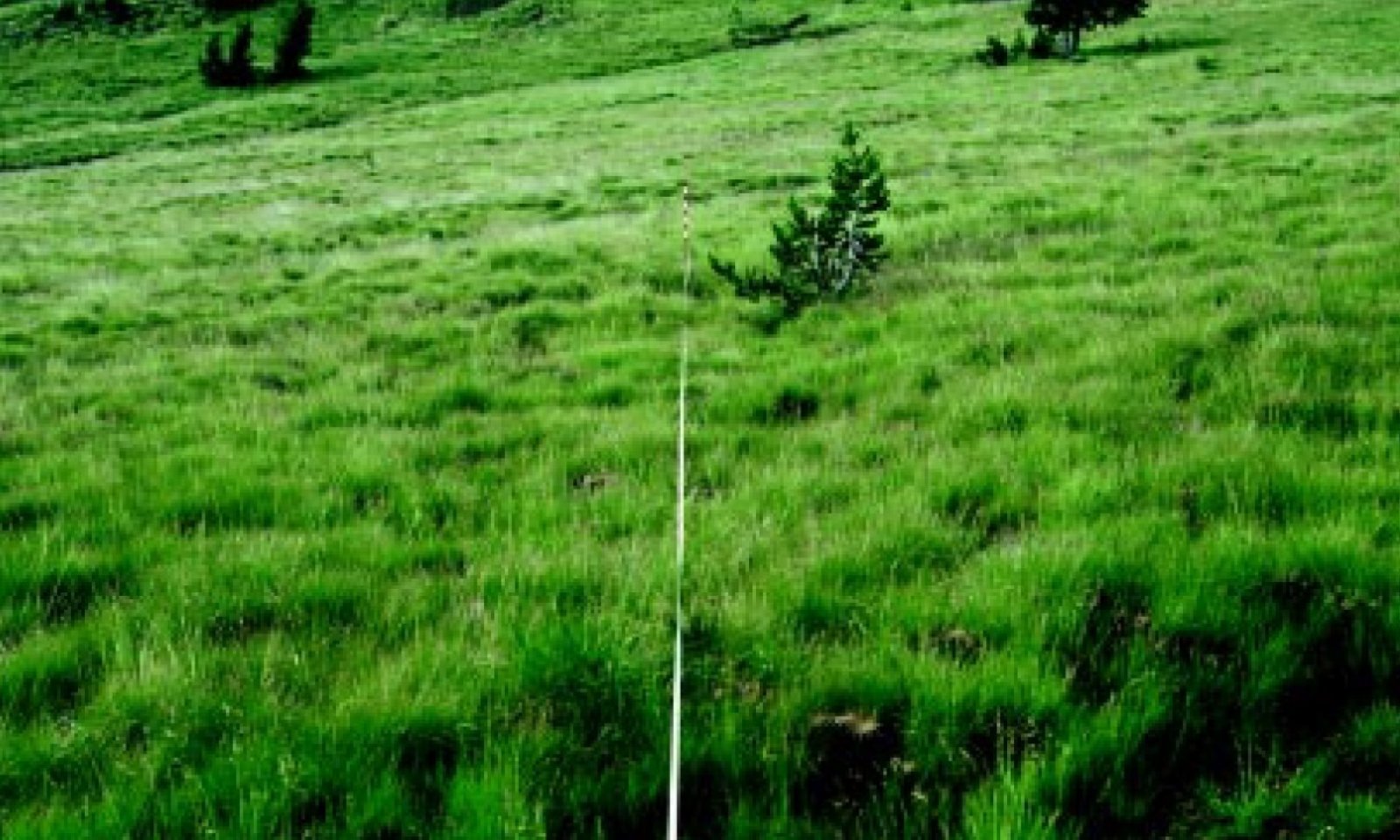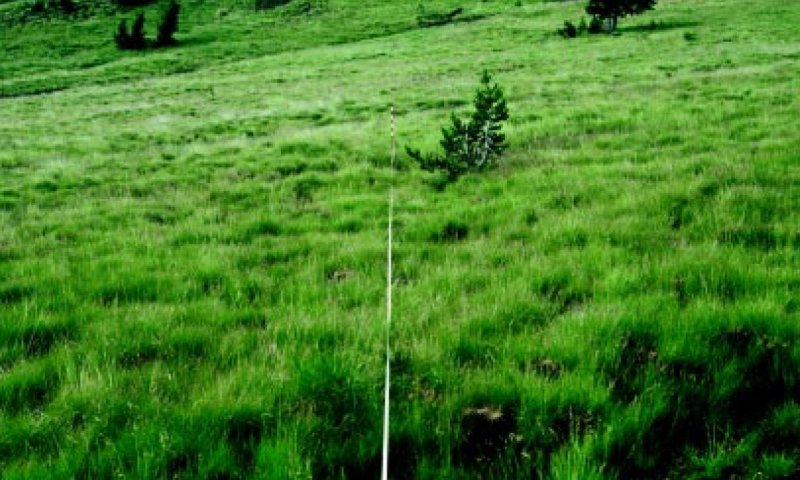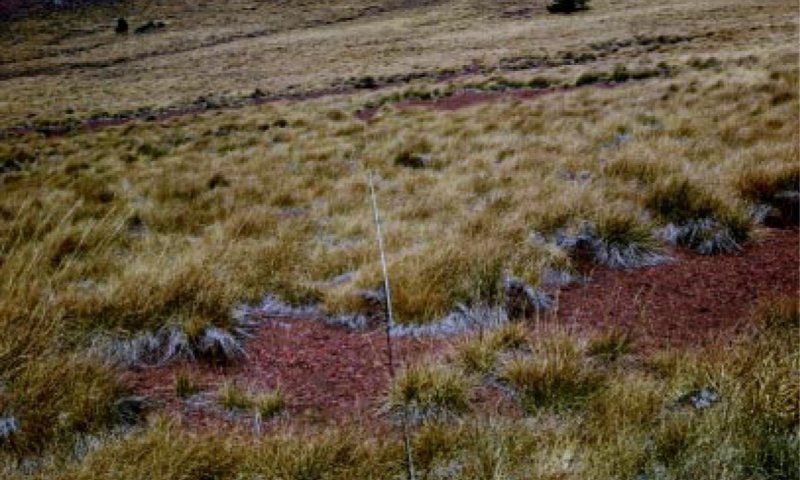

Natural Resources
Conservation Service
Ecological site R043CY801OR
Cold Dry Subalpine Grasslands (FEVI)
Last updated: 2/12/2025
Accessed: 12/07/2025
General information
Provisional. A provisional ecological site description has undergone quality control and quality assurance review. It contains a working state and transition model and enough information to identify the ecological site.
Figure 1. Mapped extent
Areas shown in blue indicate the maximum mapped extent of this ecological site. Other ecological sites likely occur within the highlighted areas. It is also possible for this ecological site to occur outside of highlighted areas if detailed soil survey has not been completed or recently updated.
MLRA notes
Major Land Resource Area (MLRA): 043C–Blue and Seven Devils Mountains
This MLRA covers the Blue and Seven Devils Mountains of Oregon, Washington and Idaho. The area is characterized by thrust and block-faulted mountains and deep canyons composed of sedimentary, metasedimentary, and volcanic rocks. Elevations range from 1,300 to 9,800 feet (395 to 2,990 meters). The climate is characterized by cold, wet winters and cool, dry summers. Annual precipitation, mostly in the form of snow, averages 12 to 43 inches (305 to 1,090 millimeters) yet ranges as high as 82 inches (2,085 millimeters) at upper elevations. Soil temperature regimes are predominately Frigid to Cryic and soil moisture regimes are predominately Xeric to Udic. Mollisols and Andisols are the dominant soil orders. Ecologically, forests dominate but shrub and grass communities may occur on south aspects and lower elevations as well as in alpine meadow environments. Forest composition follows moisture, temperature and elevational gradients and typically ranges from ponderosa pine and Douglas-fir plant associations at lower elevations, grand fir at middle elevations and subalpine fir and Engelman spruce at upper elevations. Historical fire regimes associated with these forest types range from frequent surface fires in ponderosa pine - Douglas Fir forest types to mixed and stand replacing fire regimes in grand fir and subalpine fir types. A large percentage of the MLRA is federally owned and managed by the U.S. Forest Service for multiple uses.
Classification relationships
Plant Assoc. of Blue and Ochoco Mountains (R6 E TP-036-92)
Green fescue - GS11
Hood's sedge - GS64
Western needlegrass - GS10
Plant Assoc. of Wallowa-Snake Province (R6 E 255-86)
Green fescue-Hood's sedge - GS1111
Green fescue-spurred lupine - GS1112
U.S. National Vegetation Classification System (USNVCS)
Group: G271. Rocky Mountain-North Pacific Subalpine-Montane Mesic Grassland & Meadow
Alliance: A1257: Festuca viridula - Carex hoodii - Lupinus spp. Subalpine Mesic Meadow Alliance
Ecological site concept
This is a high elevation grassland site occurring in the Blue and Wallowa mountains of Oregon. The vegetation composition is characterized by dominance of greenleaf fescue, yet other graminoids such as Ross' sedge, Hood's sedge, and Western needlegrass are also common. Common forbs include lupine, penstemon and sandwort. This site occurs on basins and ridgetops in the subalpine zone often in complex with subalpine fir and whitebark pine woodlands, where exposed positions, or coarse textured, drought prone and/or shallower soils preclude forest vegetation. Fire was rare in this site type yet grazing by both native and introduced ungulates has had considerable influence over the ecological dynamics of the site. The soil temperature regime is Cryic and the soil moisture regime is Xeric.
This is a provisional ecological site and is subject to extensive review and revision before final approval. All data herein should be considered provisional and contingent upon field validation prior to use in conservation planning.
Associated sites
| F043CY601OR |
Cold Wet Conifer Mountains and Plateaus (ABLA/VASC-VAME) Adjacent forested areas with deeper soils, often on nearby backslope positions |
|---|
Similar sites
| F043CY601OR |
Cold Wet Conifer Mountains and Plateaus (ABLA/VASC-VAME) Deeper soils, often on moisture holding aspects and protected positions |
|---|
Table 1. Dominant plant species
| Tree |
Not specified |
|---|---|
| Shrub |
Not specified |
| Herbaceous |
(1) Festuca viridula |
Click on box and path labels to scroll to the respective text.
Ecosystem states
| T1A | - | Sustained overutilization by ungulates |
|---|---|---|
| T2A | - | Further sustained overutilization and improperly managed grazing |
| R3A | - | Sustained rest from grazing or dramatic reductions in ungulate stocking rate, duration or grazing intensity, potentially coupled with reseeding with native species and erosion control structures |
State 1 submodel, plant communities
| 1.1A | - | Sustained ungulate grazing and/or rodent disturbance. |
|---|---|---|
| 1.2A | - | Extended rest from ungulate grazing or rodent disruptions or significant alterations in grazing management |




